Savory snacks are the perfect way to experience global flavors without leaving your kitchen. From crispy fried treats to cheesy delights, these mouthwatering bites represent the best of street food culture across continents. Whether you’re planning a party or just need a tasty afternoon pick-me-up, these international snacks will transport your taste buds around the world.
1. Takoyaki (Japan)
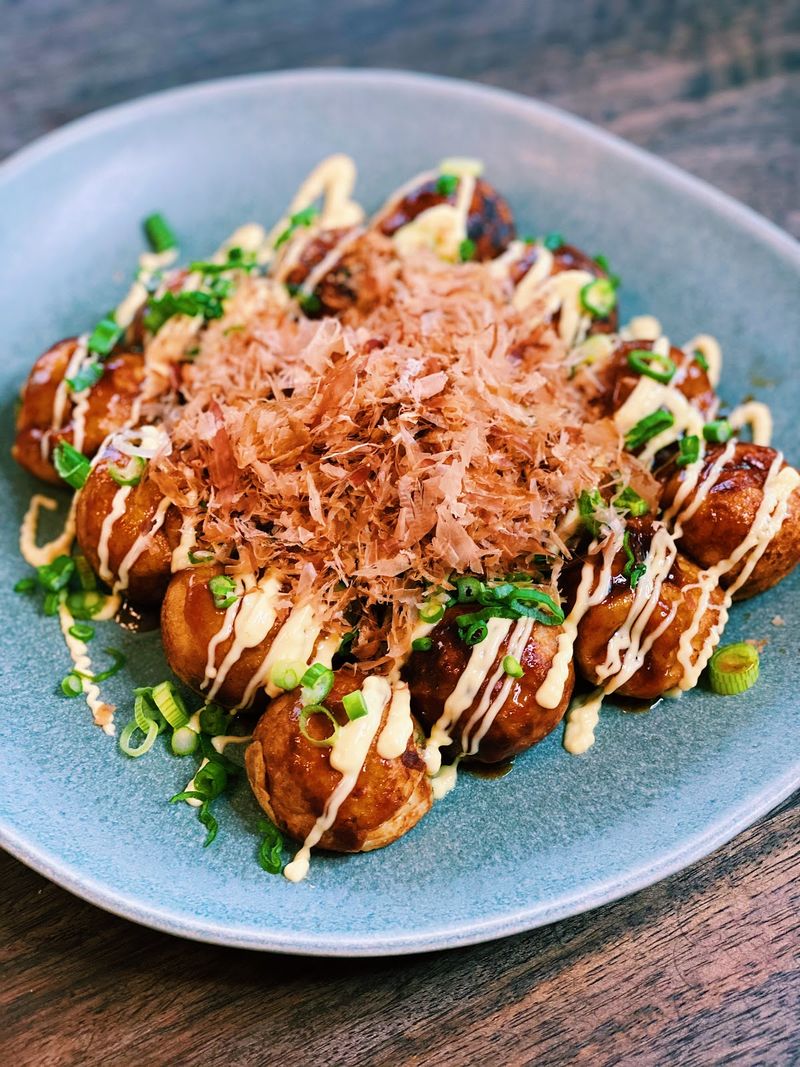
Ball-shaped wonders that capture Japan’s street food magic in every bite. Originating in Osaka in the 1930s, these savory spheres feature a wheat flour batter cooked in special molded pans, creating a crispy exterior that gives way to a soft, gooey center with tender octopus pieces.
The true delight comes from the toppings: a drizzle of sweet-savory takoyaki sauce, Japanese mayo, a sprinkle of aonori seaweed, and dancing bonito flakes that seem to wave at you from the heat. The contrasting textures and umami flavors create an unforgettable snacking experience.
Perfect for festivals or casual gatherings, takoyaki brings people together around the sizzling pan as they wait for these delicious morsels to cook to golden perfection.
2. Arepas (Venezuela/Colombia)
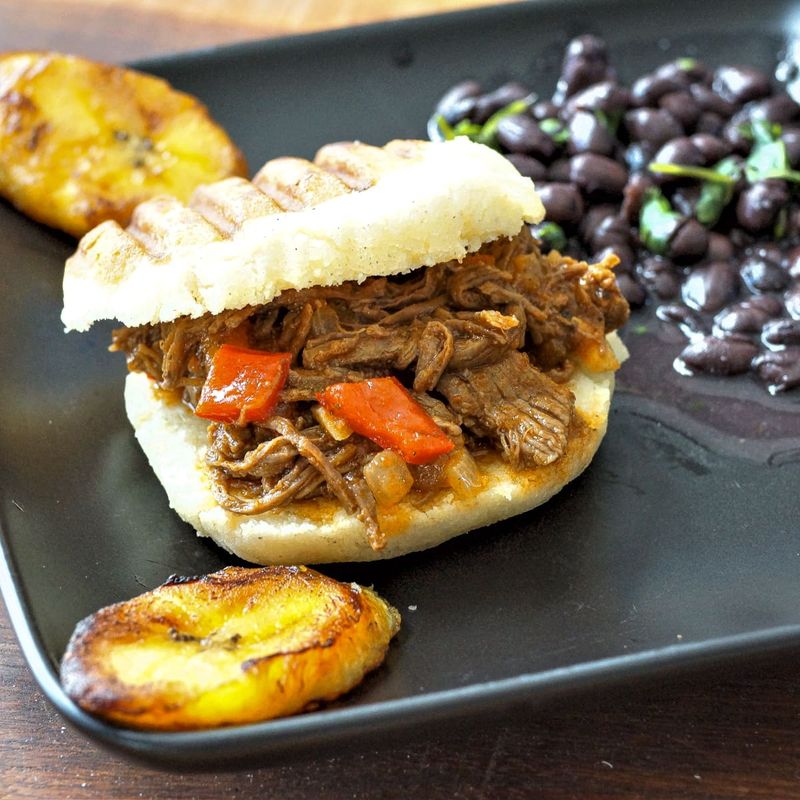
Humble cornmeal patties that have nourished South Americans for centuries. These versatile discs are made from pre-cooked corn flour (masarepa) mixed with water and salt, then grilled, baked, or fried until golden with a slight crust forming around their pillowy centers.
What makes arepas truly special is their pocket-like structure, perfect for stuffing with endless fillings. Venezuelans might fill them with shredded beef (carne mechada), black beans, or cheese, while Colombians often enjoy them with butter or cheese melted on top.
Morning, noon, or night, arepas serve as affordable, filling comfort food that crosses socioeconomic boundaries. Their simple preparation belies their incredible versatility – from basic street food to gourmet creations in upscale restaurants.
3. Samosas (India)
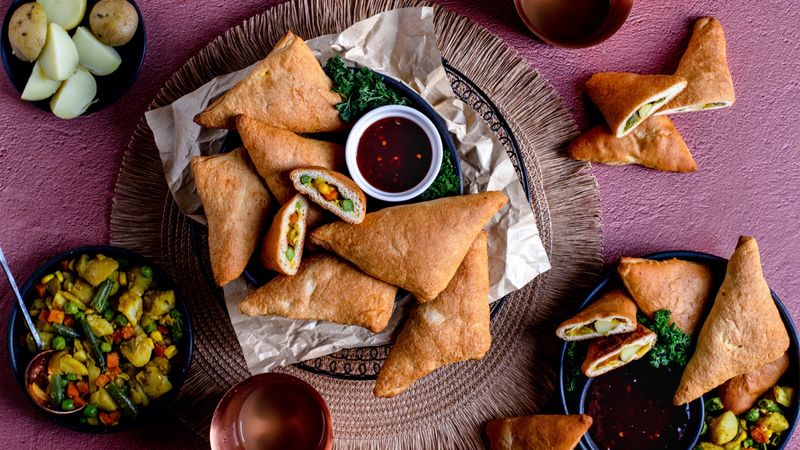
Triangular treasures that pack a flavor explosion in every crispy bite. These iconic Indian snacks feature a thin, flaky pastry shell wrapped around a savory filling, traditionally spiced potatoes and peas, though meat versions are equally beloved across the subcontinent.
The magic lies in the aromatic spice blend – cumin, coriander, garam masala, and fiery green chilies – that transforms simple ingredients into something extraordinary. Fresh from the fryer, samosas offer an irresistible contrast between the crackling exterior and steamy, fragrant interior.
Typically served with mint-coriander chutney or tamarind sauce, these portable treats appear everywhere from humble street carts to lavish wedding celebrations. Regional variations abound, with some areas preferring smaller, crispier versions while others celebrate larger, more substantial samosas.
4. Pão de Queijo (Brazil)

Heavenly cheese puffs that melt in your mouth with every chewy bite. These small, baked rolls from the Minas Gerais region have humble origins among enslaved people who created them using leftover cassava from plantation kitchens, later adding cheese when it became available.
The distinctive chewy texture comes from tapioca starch (polvilho), which gives these naturally gluten-free treats their addictive elastic quality. When mixed with eggs, oil, milk, and generous amounts of cheese – traditionally Minas cheese, though Parmesan works well – the dough transforms into golden orbs with crisp exteriors and stretchy, cheesy centers.
Brazilians enjoy these warm puffs for breakfast with coffee, as afternoon snacks, or alongside main meals. Their popularity has spread worldwide, with bakeries and Brazilian restaurants offering these irresistible cheese breads to delighted new fans.
5. Biltong (South Africa)
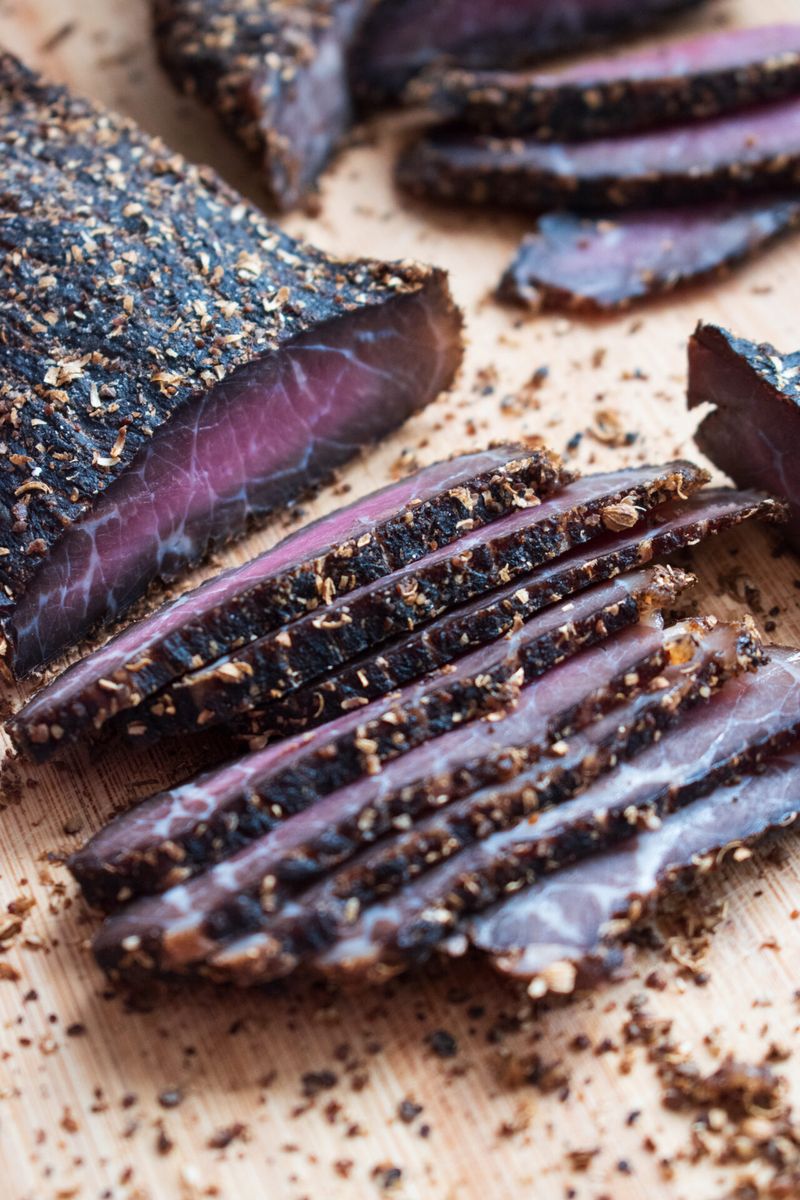
Protein-packed strips that tell the story of South African preservation traditions. Unlike its American jerky cousin, biltong undergoes a slower curing process with vinegar and spices, resulting in a softer, more complex flavor profile that meat lovers cherish.
The preparation begins with marinating strips of beef (though game meats like kudu or ostrich are traditional alternatives) in vinegar with salt, coriander, black pepper, and sometimes brown sugar. After marination, the meat air-dries for several days until it reaches the desired texture – from moist and chewy to firm and dry.
Biltong’s origins trace back to indigenous preservation methods combined with Dutch settlers’ techniques. Today, South Africans snack on biltong while watching rugby matches, hiking, or simply craving a savory protein boost without the additives found in commercial meat snacks.
6. Spanakopita (Greece)
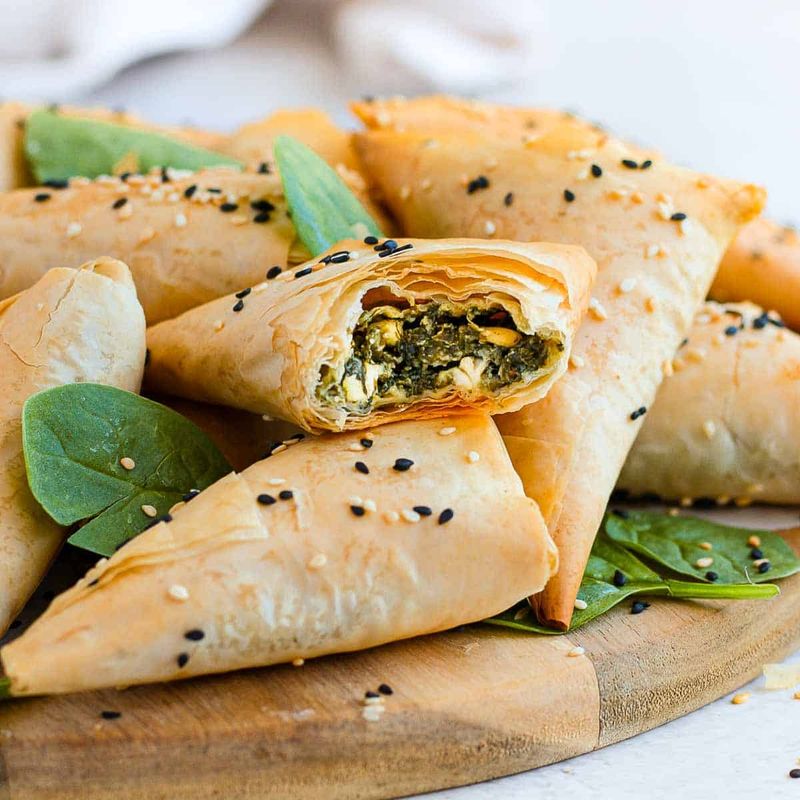
Flaky parcels that showcase the Mediterranean’s love affair with spinach and feta. This ancient Greek pastry combines paper-thin phyllo dough with a savory filling of wilted spinach, tangy feta cheese, fresh dill, and aromatic onions, creating the perfect harmony of textures and flavors.
The magic happens during baking, when the butter-brushed phyllo layers transform into a shatteringly crisp golden crust that gives way to the creamy, herb-flecked interior. While traditionally formed into large pies (pitas) and cut into portions, the handheld triangular versions make perfect portable snacks.
Found in every Greek bakery and family kitchen, spanakopita connects generations through recipes passed down from yiayias (grandmothers) who perfected the art of stretching dough and balancing flavors. Many families have their secret touches – extra lemon zest, a pinch of nutmeg, or a specific cheese blend.
7. Empanadas (Argentina/Spain)
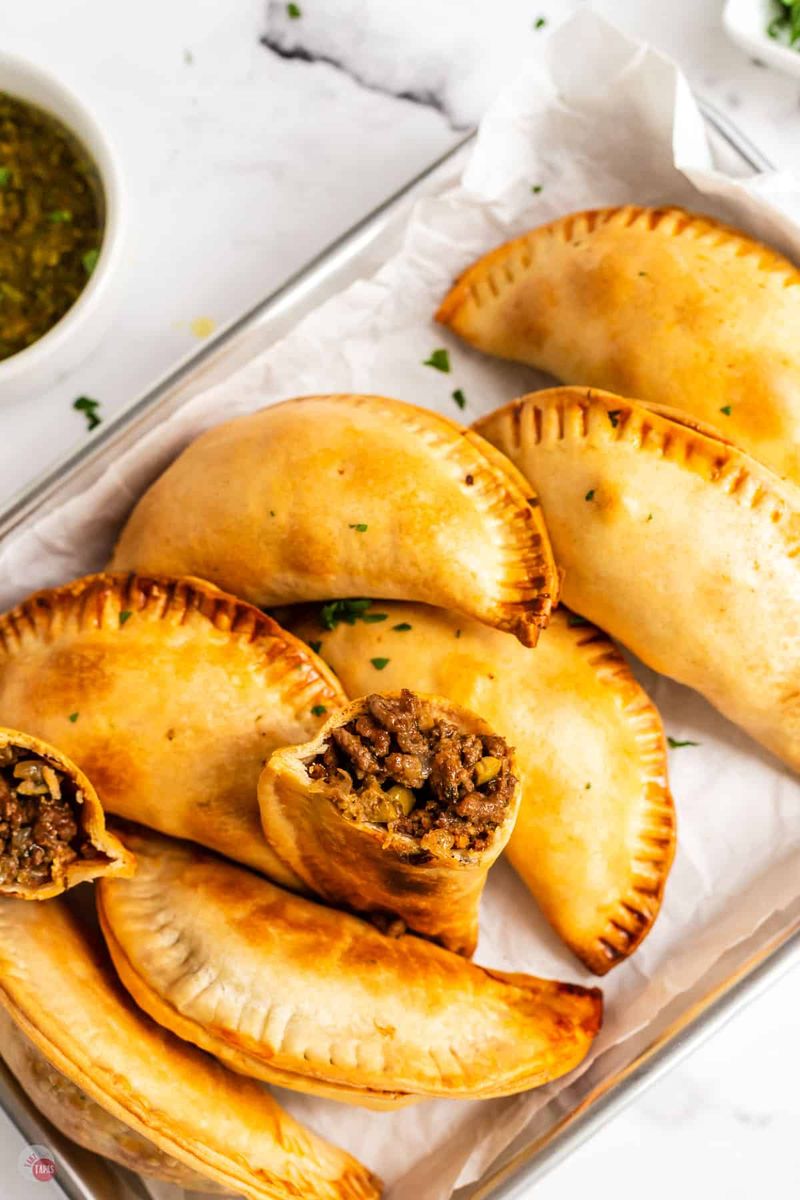
Half-moon pockets that tell tales of colonial influences and local adaptations. These handheld savory pastries traveled from Spain to Latin America during colonization, evolving uniquely in each region they touched, with Argentina developing particularly celebrated versions.
The dough ranges from flaky to bread-like, depending on regional preference, while fillings showcase local ingredients. Argentine empanadas might feature hand-cut beef with olives, hard-boiled eggs, and spices, while Chilean versions often include seafood. Spanish empanadas tend to be larger, sometimes featuring tuna, chorizo, or vegetable fillings.
Skilled empanada makers use distinctive crimping patterns (repulgue) to identify what’s inside each pastry. Family gatherings often center around making these treats together, with recipes guarded as precious heirlooms and each cook adding their personal touch to the filling’s seasoning.
8. Tostilocos (Mexico)
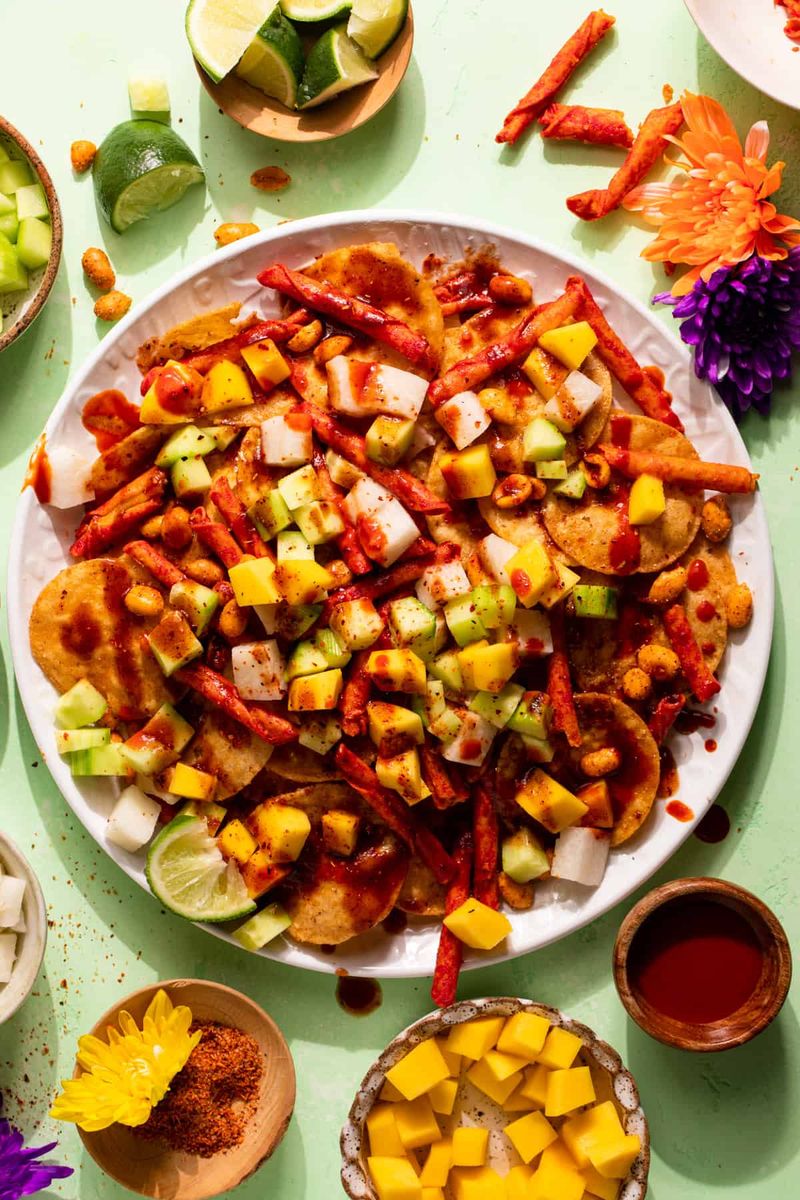
Carnival of flavors that revolutionized Mexican street snacking in the 1990s. This modern creation from northern Mexico starts with a bag of tortilla chips (often Tostitos) sliced open lengthwise and topped with an explosion of contrasting ingredients that might seem unusual to newcomers but create an addictive flavor symphony.
The magic combination includes crunchy jicama and cucumber batons, tangy lime juice, fiery hot sauce, Japanese peanuts (cacahuates japoneses), chewy tamarind candy, and the crowning glory – chamoy sauce, a sweet-sour-spicy condiment made from pickled fruit. The resulting snack delivers every possible flavor and texture in each bite.
Typically served in the original chip bag for on-the-go eating, tostilocos exemplify Mexican street food innovation, combining pre-packaged convenience with fresh ingredients and traditional flavors. Regional variations might include pickled pig skin (cueritos) or shredded carrots.
9. Gimbap (South Korea)
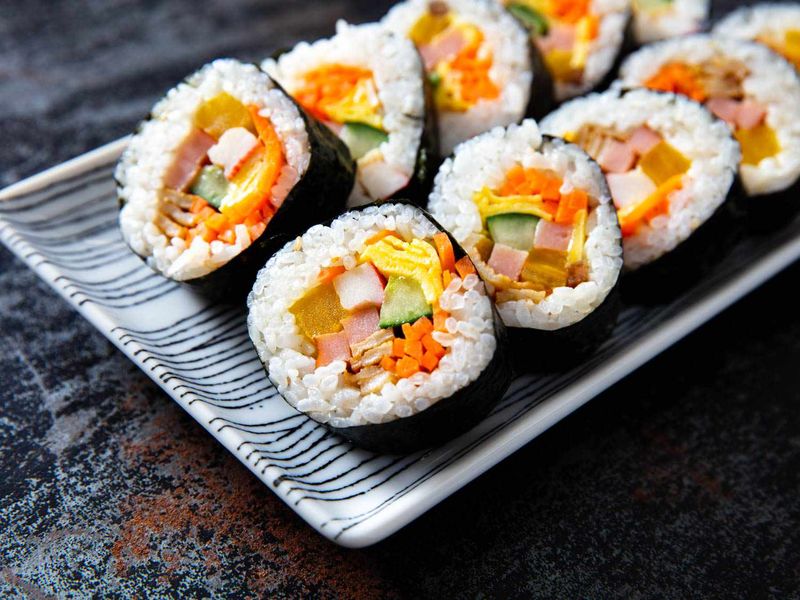
Colorful rolls that showcase Korea’s talent for creating perfectly portable meals. Often mistaken for Japanese sushi, gimbap (or kimbap) has its own distinct identity with seasoned rice and cooked ingredients wrapped in dried seaweed (gim), creating a beautiful mosaic when sliced.
Traditional fillings include seasoned spinach, pickled radish (danmuji) with its sunny yellow color, carrots, egg, and protein options like bulgogi beef or ham, all carefully arranged for visual appeal. The rice is lightly seasoned with sesame oil rather than vinegar, giving gimbap its characteristic nutty flavor.
Originally created as picnic food for outdoor excursions (like school field trips), these convenient rolls now appear everywhere from convenience stores to specialized gimbap restaurants. Koreans cherish them as affordable comfort food that provides a balanced meal in each bite, perfect for busy commuters or hungry students.
10. Khachapuri (Georgia)

Boat-shaped bread that carries Georgia’s soul in its cheesy embrace. This centuries-old staple from the Caucasus region takes bread and cheese – two simple ingredients – and transforms them into a transcendent experience that’s simultaneously comforting and exciting.
While regional variations exist throughout Georgia, the most famous is Adjaruli khachapuri – an open-faced, boat-shaped bread filled with a pool of molten cheese (traditionally sulguni and imeruli) and topped with a raw egg and butter. The diner tears off pieces of the crisp crust and swirls them through the cheese-egg mixture for the perfect bite.
Beyond being delicious, khachapuri represents Georgian hospitality and the importance of sharing meals. The dish has become so culturally significant that the country’s tourism board once created a khachapuri index to track economic indicators based on the cost of ingredients for this beloved national treasure.
11. Scotch Egg (UK)

Picnic favorite that combines British practicality with unexpected luxury. Despite the name suggesting Scottish origins, these savory treats likely originated at London’s Fortnum & Mason department store in 1738 as portable luxury for wealthy coach travelers.
The construction is ingenious: a hard-boiled egg (though modern gourmet versions often feature soft-boiled eggs with runny yolks) completely encased in seasoned sausage meat, then coated in breadcrumbs and deep-fried to golden perfection. The contrast between the crisp exterior, savory meat layer, and tender egg creates a satisfying protein-packed snack.
Traditional British picnics wouldn’t be complete without these hearty orbs, typically served cold with mustard. Pubs across the UK have embraced creative variations, incorporating black pudding, chorizo, or vegetarian alternatives, elevating this humble snack to gastropub stardom.
12. Lumpia (Philippines)
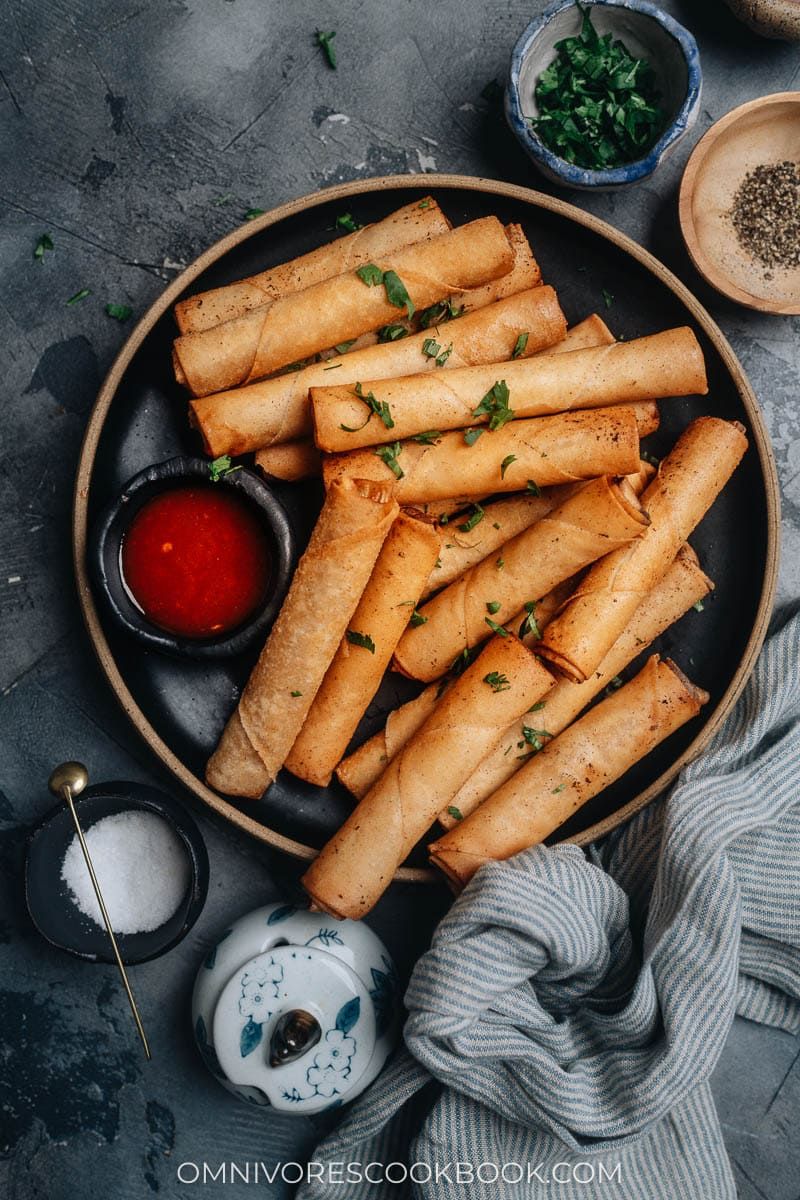
Crispy cylinders that reflect the Philippines’ multicultural heritage. These beloved spring rolls trace their origins to Chinese influence on Filipino cuisine, evolving into distinctly local varieties that appear at virtually every celebration and family gathering throughout the islands.
Lumpia Shanghai, the most popular type, features a savory filling of ground pork, minced vegetables, and aromatic seasonings tightly wrapped in paper-thin pastry wrappers and fried until golden and blistered. The ultra-thin wrappers create an exceptionally crispy shell that shatters delightfully with each bite, revealing the flavorful filling within.
Families often gather to make lumpia together, with assembly becoming a social activity as everyone helps fold and seal dozens of rolls. Traditionally served with sweet chili dipping sauce or vinegar-based sawsawan, these finger foods disappear quickly from party platters, prompting wise hosts to always prepare extra.
13. Pierogi (Poland)

Crescent-shaped dumplings that have comforted Polish families for generations. These versatile pockets feature a simple dough wrapped around fillings that range from savory to sweet, though the most iconic version contains a mixture of mashed potato and farmer’s cheese (ruskie pierogi).
After boiling to tender perfection, pierogi are often pan-fried in butter with onions until golden and crispy on the edges. The contrast between the soft, chewy dough and the crisp exterior creates an irresistible texture that pairs perfectly with toppings like sour cream, bacon bits, or fried onions.
Polish grandmothers (babcias) take immense pride in their pierogi-making skills, with family recipes closely guarded and techniques passed down through generations. While traditionally associated with Christmas Eve meals, these beloved dumplings now appear year-round in Polish homes and have gained international popularity through diaspora communities.
14. Falafel (Middle East)

Ancient fritters that have sustained Mediterranean and Middle Eastern cultures for millennia. These protein-rich patties or balls made from ground chickpeas or fava beans (depending on the regional variation) are mixed with herbs, spices, and aromatics before being deep-fried to crispy perfection.
The magic lies in the contrast between the crunchy exterior and the tender, herb-flecked interior studded with parsley, cilantro, garlic, cumin, and coriander. While delicious on their own, falafel truly shine when stuffed into warm pita bread with tahini sauce, fresh vegetables, and pickles for a complete handheld meal.
Beyond being delicious, these plant-based morsels tell a cultural story – they’re a street food that transcends borders, claimed as a national dish by Egyptians, Palestinians, Israelis, and others throughout the region. Their affordable, filling nature makes them beloved across socioeconomic boundaries.
15. Cheese Breadsticks (Italy)

Elegant finger food that transforms simple ingredients into irresistible snacking magic. These Italian favorites come in two distinct styles: grissini – the thin, crispy breadsticks originating in Turin that snap with satisfying crunch, or the softer, chewier American-Italian interpretation that features a pillowy interior beneath a cheese-crusted exterior.
Traditional grissini are hand-rolled and stretched to create irregular, rustic shapes before being baked until dry and crisp, often incorporating Parmesan directly into the dough. The softer variation typically features twisted dough brushed with butter and garlic before being coated with melted cheese that forms a savory, golden crust.
Both styles excel as appetizers alongside antipasto platters or dipped into marinara sauce. Their portable, mess-free nature makes them perfect for entertaining, while their simple ingredients showcase how Italian cuisine elevates basic components through technique and quality.
Leave a comment